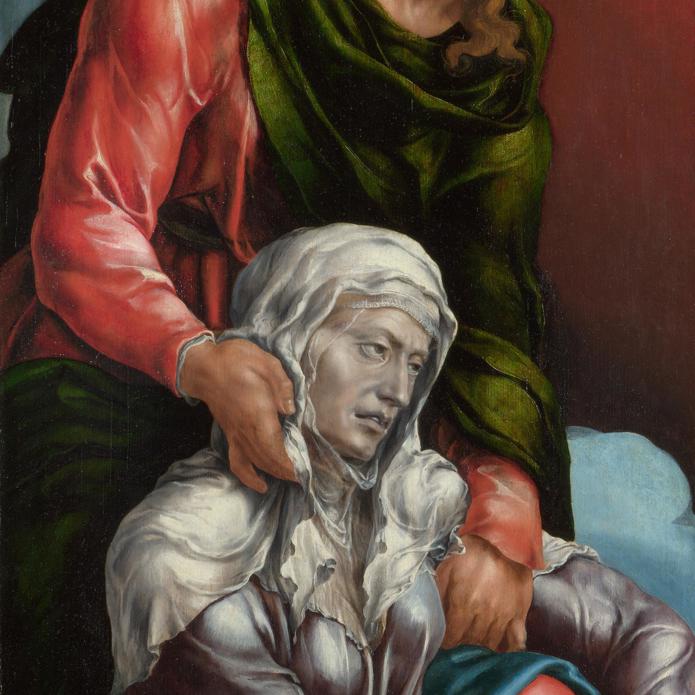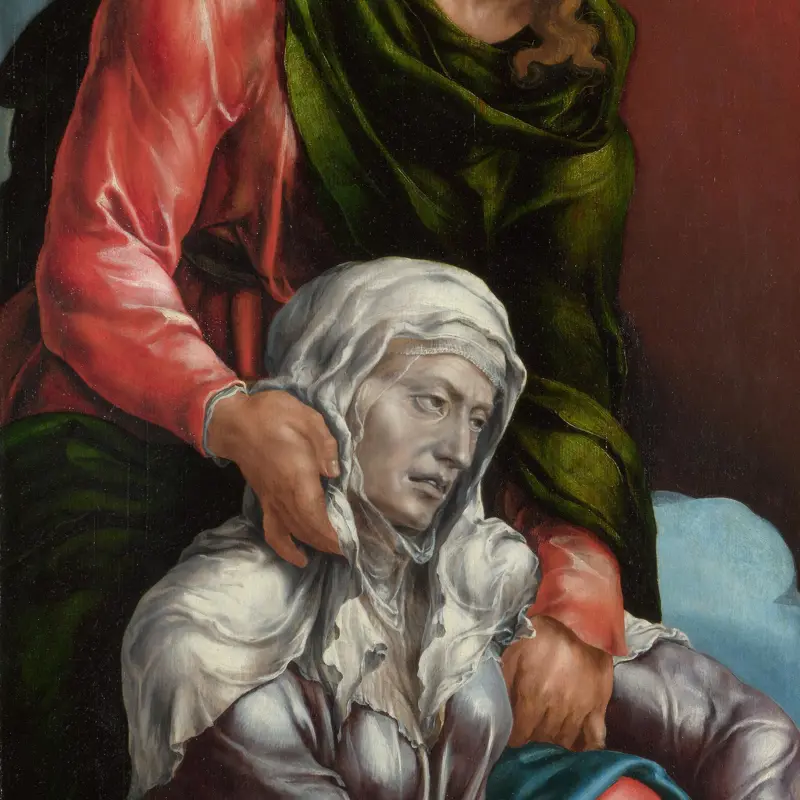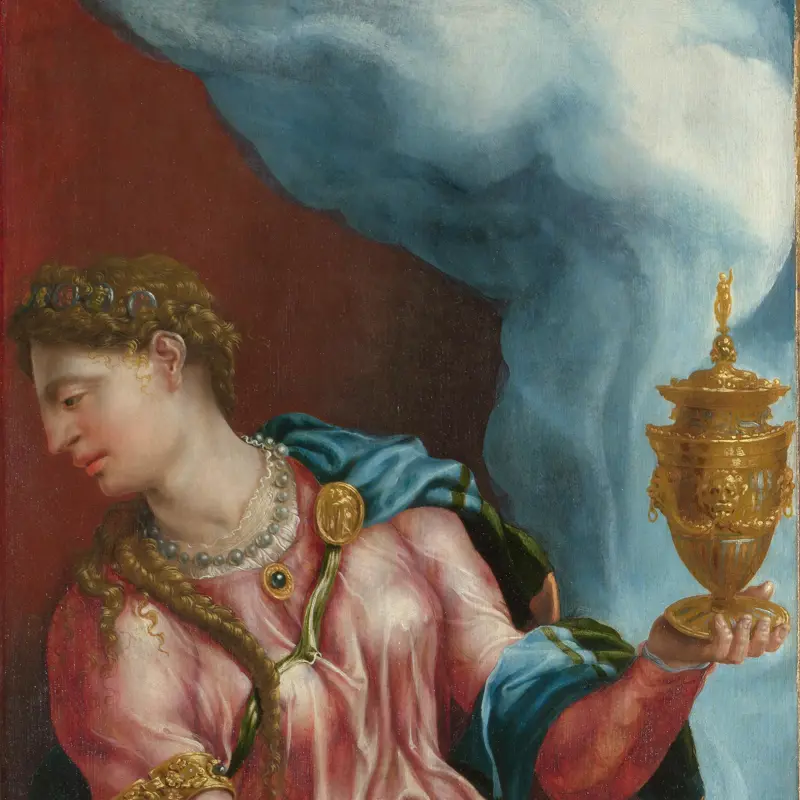Marten van Heemskerck, 'The Donor and Saint Mary Magdalene', about 1540
About the work
Overview
A statuesque Mary Magdalene, one of Christ’s followers, rests her fingers on the shoulder of a kneeling donor. In the other hand, she nonchalantly lifts a large golden vessel. This is the pot containing the precious ointment with which she anointed Christ’s feet (Luke 7:37). In sharp contrast to her colourful opulence, the donor is a serious-looking middle-aged man dressed as a canon. He appears to be both balding and tonsured.
This is one of two shutters from a triptych (a painting made up of three sections), the central part of which is lost. We are not sure who or where they were made for, but the coats of arms painted on the back of the panels are similar to those of the Hamal and Kersbeke families. The donor may have been a canon whose father was a Hamal and whose mother was a Kersbeke.
Key facts
Details
- Full title
- The Donor and Saint Mary Magdalene
- Artist
- Marten van Heemskerck
- Artist dates
- 1498 - 1574
- Part of the series
- Two Shutters from a Triptych
- Date made
- About 1540
- Medium and support
- Oil on wood (Baltic/Polish oak, identified)
- Dimensions
- 125.7 × 47.7 cm
- Acquisition credit
- Bought, 1986
- Inventory number
- NG6508.2
- Location
- Room 54
- Collection
- Main Collection
- Frame
- 17th-century Dutch Frame
Provenance
Additional information
Text extracted from the ‘Provenance’ section of the catalogue entry in Lorne Campbell, ‘National Gallery Catalogues: The Sixteenth Century Netherlandish Paintings: With French Paintings before 1600’, London 2014; for further information, see the full catalogue entry.
Exhibition history
-
2024Maarten van HeemskerckStedelijk Museum Alkmaar28 September 2024 - 19 January 2025
Bibliography
-
1988National Gallery, The National Gallery Report: January 1985 - December 1987, London 1988
-
2001
C. Baker and T. Henry, The National Gallery: Complete Illustrated Catalogue, London 2001
-
2014
L. Campbell, National Gallery Catalogues: The Sixteenth Century Netherlandish Paintings: With French Paintings before 1600, 2 vols, London 2014
Frame
This panel is housed in an antique Dutch frame dating from the late sixteenth century to the 1630s. The double-sided frame is crafted from ebonised oak. The front features an intricate stepped moulding with two gilded filets leading to a frieze. A narrow filet at the sight edge is also gilt. On the reverse of the frame, there is a wide frieze with a gilt step moulding along the sight edge.
Notably, on the side of the frame is a recess, shaped for butterfly hinges. When Marten van Heemskerck’s The Virgin and Saint John the Evangelist was restored in 1987 and the frame was adjusted, it was agreed that this frame could not be the original frame for the painting.
About this record
If you know more about this work or have spotted an error, please contact us. Please note that exhibition histories are listed from 2009 onwards. Bibliographies may not be complete; more comprehensive information is available in the National Gallery Library.
Images
About the series: Two Shutters from a Triptych

Overview
These two panels formed the shutters of an altarpiece and are painted on both sides. On the front left we see the Virgin Mary and Saint John the Evangelist, and on the right, Saint Mary Magdalene and the donor. The reverses show two bishop saints and coats of arms (unidentified).
The central panel is lost. It was probably, although not certainly, a painting, showing the suffering Christ. If it was a painting, and was put into a frame at the same time as the present old, but not original, frame, its painted surface would have measured about 123.5 by 107.5 cm. Various suggestions have been made as to panels by Marten van Heemskerck which might fit the bill.


